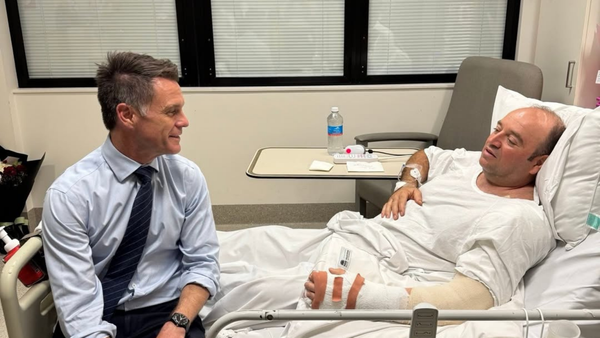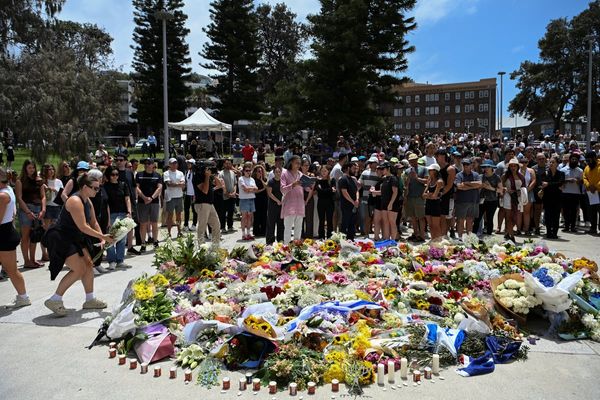.jpeg?width=1200&auto=webp&crop=3%3A2)
This singular, wordless theatrical experience uses recorded sound and Foley work – heightened aural effects created by four performers – to take us into the worlds of a deer and a cow, a wild animal and an “industrialised” one. It doesn’t entirely work: and it fails completely in its wider aim to make us ruminate on the climate emergency by seeing life from a non-human-centric perspective. But it is a transporting, transfixing oddity, a beautiful celebration of a finely-honed craft and a testament to the infinite variety of live theatre.
Fingers shred vegetables then scrape through a bag full of gravel (I think) to create the sound of an animal cropping then masticating foliage. Flannels flap to replicate the startled flight of birds. Susurrating polystyrene balls represent scurrying mice. Cow gives birth to a calf with a barrage of recorded snorts and moos and the squelching slap of a wet cloth dropped onto grass. When the human world intrudes – cars, planes, the roar of a combine harvester or the trudge and mumble of an approaching farmer – the skittering Deer and the plodding Cow pause, held and apprehensive.
Before the show, a stage manager tells us we can close our eyes and just soak up the auditory landscape, but watching its creation is part of the fascination. The cast, if we can call them that, stand in semi-darkness behind a bank of hay bales strewn with gravel, cloth and slices of toast, a tank of water in the middle, microphones in front and a booth behind where they go when portraying humans. All sorts of things, from rope to tinsel, a watering can to a hot water bottle, are deployed to create unnaturally sharpened impressions of natural sounds.
.jpeg)
Tom Espiner and Ruth Sullivan, professional Foley artists as well as actors, “play” Cow and Deer respectively, with backup from Tatenda Matsvai and Pandora Colin. The mood is one of intense concentration and high seriousness: they’re really invested in being these animals. Sometimes I felt hilarity bubble up.
Whatever Espiner uses to recreate the sound of Cow’s hooves on grass or gravel – again, it’s hard to see – irresistibly recalls the clopping coconut shells of the knights in Monty Python and the Holy Grail. The consonant-free murmurs of the intruding humans are innately comic. The detail borders on the obsessive. Does one kind of grass brushed by a passing animal really sound significantly different to another? I may never look at a watermelon the same way again.
This show is the creation of the fiercely questing intelligence of director Katie Mitchell, sound artist Melanie Wilson - a frequent Mitchell collaborator - and writer Nina Segal. It covers the course of a day in 60 minutes and an arc that embraces death as well as birth. Some moments are powerfully realised through sound alone: Cow’s separation from her calf, the pain of the injured Deer expressed through ragged breath. Wilson’s recordings bring buzzing insects and pattering rain close and make the human realm remote and alien.
Generally, though, there’s no sense of these animals’ interior lives beyond the impulses to feed, defecate and flee danger (an alternative title could be Eats, Shits and Leaves). How could there be? Who knows how a cow thinks? It’s far too big a jump to go from this mostly gentle, sometimes cruel, bucolic soundscape into a holistic understanding of the peril into which the Anthropocene era has put the globe.
To her immense credit, Mitchell is the most prominent theatre maker seeking to address the climate crisis on stage: but like policy makers and punters, she seems defeated each time by the existential hugeness of the issue. Her parallel desire to explore the boundaries of both live experience and technology at least results in a fascinating theatrical curiosity here.
To 11 Oct, royalcourttheatre.com.







